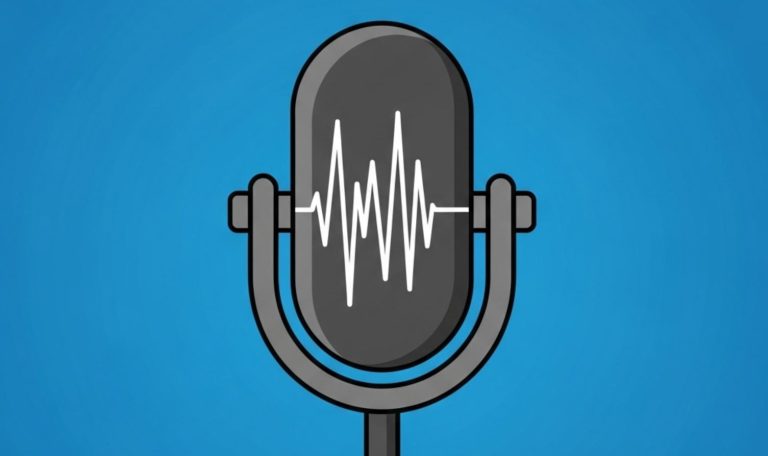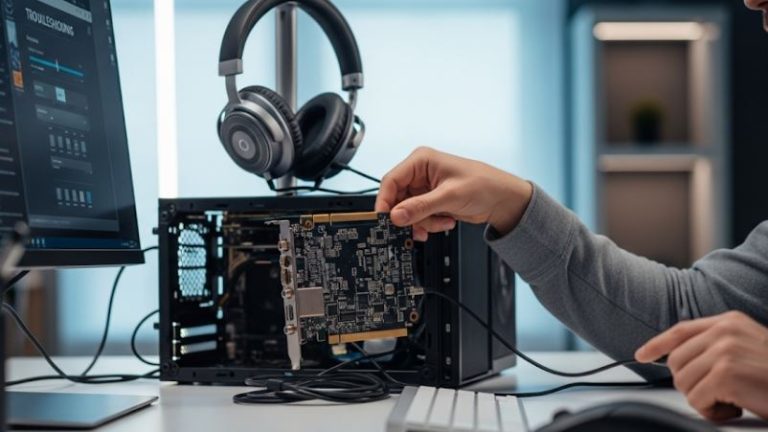
In an age of sleek designs and remote-controlled everything, the humble manual power button on a television can often feel like a hidden relic from a bygone era. You’re not alone if you’ve found yourself patting down the sides, peering at the back, or squinting at the front of your TV in a desperate search for this seemingly simple switch. The frustration is real, especially when your remote is missing, the batteries are dead, or you’re facing a technical glitch that requires a hard reset.
This comprehensive guide is dedicated solely to helping you locate that elusive manual power button on your television. We’ll delve into the common (and not-so-common) places manufacturers choose to hide these controls, the different types of buttons you might encounter, and a systematic approach to your search. So, take a deep breath, and let’s embark on this button-hunting expedition together! 🗺️
The Vanishing Act: Why Are Physical TV Buttons Becoming So Hard to Find?
Before we dive into the „where,” it’s helpful to understand the „why.” Several factors contribute to the increasing obscurity of manual TV controls:
- Aesthetics and Minimalism: The Drive for Sleek Designs: Modern television design heavily emphasizes clean lines, ultra-thin bezels, and an unobtrusive presence in your living space. Physical buttons, especially a cluster of them, can be seen as disrupting this minimalist aesthetic. Manufacturers strive for a seamless look, often integrating buttons in ways that make them nearly invisible. This trend towards minimalist design in electronics prioritizes form, sometimes at the expense of immediate functional clarity for less-used features.
- The Remote is King: Assumption of Primary Control: Let’s face it, the remote control is the primary way we interact with our TVs. Manufacturers know this and design the user experience around it. The manual buttons are often considered secondary or backup controls, leading to them being de-emphasized in terms of placement and prominence.
- Cost and Manufacturing Simplification: While it might seem minor, reducing the number of visible, complex button assemblies can lead to slight cost savings and simplification in the manufacturing process. Every component and design choice is scrutinized.
- Preventing Accidental Presses: Especially on TVs with very thin bezels, placing buttons on the front or easily accessible sides could lead to accidental presses when handling or cleaning the screen. Hiding them reduces this likelihood.
Understanding these reasons doesn’t make the button magically appear, but it can help you appreciate the design philosophy that often leads to its concealed nature.
Preparing for the Hunt: Tips Before You Start Your Search 🕵️♀️
A little preparation can make your search for the TV’s power button more efficient and less frustrating.
- Ensure Good Lighting: This might seem obvious, but many TV buttons are dark, small, and unlabelled. A well-lit room is crucial. Consider using a flashlight or your phone’s torch, especially when examining the back or underside of the TV.
- Safety First (A Gentle Reminder): While you’re unlikely to encounter any electrical hazards simply by looking for a button, if you find yourself needing to move the TV significantly or probe into very tight crevices (which generally shouldn’t be necessary), it’s always a good habit to unplug the television first. For a visual and tactile search of the exterior, this is typically not required.
- Grab a Magnifying Glass (Optional but helpful): If your eyesight isn’t what it used to be, or if the button is particularly tiny or its symbol is faint, a magnifying glass can be a useful aid.
- Patience is a Virtue: Finding a well-hidden button can take a few minutes. Don’t get discouraged if you don’t spot it immediately. Work through the common locations methodically.
Common Culprits: Where Manufacturers Typically Hide TV Power Buttons
TV manufacturers have a few favorite hiding spots for power buttons. Let’s explore them systematically:
1. The Bottom Edge: The Most Frequent Hideout
This is often the first place you should look. Many manufacturers place a single power button or a small cluster of control buttons along the bottom edge of the TV frame.
- Dead Center: Run your fingers along the middle of the bottom bezel. The button might be a small, slightly protruding nub or a slightly recessed area.
- Slightly Off-Center: Left or Right: If not in the exact center, check towards the right or left side of the bottom edge. This is particularly common if there’s a manufacturer’s logo or an IR sensor in the middle.
- Beneath a Lip or Overhang: Some designs feature a slight lip or overhang on the bottom edge where buttons are tucked away, invisible from a direct frontal view. You’ll need to feel for them.
- Tactile Clues: Often, even if the button isn’t clearly visible, you might feel a small bump, a different texture, or an indentation. The power button might be slightly larger or shaped differently than other adjacent buttons (like volume or channel).
2. The Side Panels: A Runner-Up Location
If the bottom edge yields no results, the side panels (left or right) are your next best bet.
- Lower Right or Left Sides: Typically, these buttons are found on the lower half of the side edge, making them accessible whether the TV is on a stand or wall-mounted. The right side (when facing the TV) is a very common spot.
- Mid-Point on the Edge: Less common, but some TVs might have buttons positioned roughly in the middle of the side edge.
- Look for a Cluster of Buttons: If you find one button, you’ll often find others (volume up/down, channel up/down, input select). The power button is usually the top or bottom button in such a cluster or set slightly apart.
- Feel for Protrusions or Recesses: Similar to the bottom edge, run your fingers along the sides. Buttons can be very subtle.
3. The Back Panel: Less Common but Possible
While less convenient, some manufacturers place control buttons on the back of the television. This is more common on smaller TVs or monitors but can be found on larger sets too.
- Near Input Ports (HDMI, USB): Check the area around the HDMI, USB, and other input connections. Buttons might be integrated into a small control panel here.
- Lower Corners of the Back: Explore the lower left or right corners of the TV’s back casing.
- Check for Small, Often Unlabeled Buttons: Buttons on the back are frequently small, black, and may lack clear labeling, relying on position or a tiny embossed symbol.
- Recessed Buttons Requiring a Pointed Object: In rare cases, a reset button might be recessed (requiring a paperclip), but power buttons are almost always designed for finger operation. However, a main power rocker switch (distinct from the standby button) can sometimes be found near the power cord input on the back of some older or larger displays.
4. The Front Face: Masters of Camouflage
This might seem counterintuitive – why hide a button on the front? The answer, again, is aesthetics. Front-facing buttons are often designed to be incredibly discreet.
- Beneath the Manufacturer’s Logo: Some TVs have a power button cleverly integrated into or just beneath the manufacturer’s logo on the front bezel. It might be a touch-sensitive area or a very subtle physical button.
- Integrated into the Bezel (Often Touch-Sensitive): Many modern TVs use touch-sensitive controls that are only visible when the TV is on or when your finger approaches the area. Look for faint icons that might illuminate. These can be exceptionally hard to spot when the TV is off.
- Behind a Small, Unmarked Panel or Door: Less common now, but some older designs had a small flap or door on the front that concealed buttons.
- Look for Subtle Symbols: Even if the button itself is camouflaged, there might be a tiny, almost invisible power icon (⏻) printed or embossed nearby.
Identifying the Elusive Button: What to Look For
Once you’re searching in the right areas, knowing what kind of button you’re looking for can significantly speed up the process.
- The Universal Power Symbol (⏻): Your Best Friend. This is the most common indicator. It’s a circle with a vertical line either partially inside or breaking its top. Sometimes it’s just a circle or a vertical line within a rounded rectangle. Familiarize yourself with its variations.
- Single, Standalone Button vs. Multi-Button Array:
- Standalone: Many TVs, especially those heavily reliant on remote controls, will have just a single physical button that serves as the power button. A short press might turn it on/off, while a long press might bring up a small menu (power, volume, input).
- Multi-Button Array: You might find a small row or cluster of 3 to 5 buttons. Typically, these include power, volume up/down, and channel up/down. The power button is often the first, last, or slightly separated one.
- Joystick/Toggle Controls: A Modern Approach (Press for Power): Increasingly popular, especially on brands like LG and Samsung, is a small joystick-like nub often located on the bottom edge (center or right) or the lower back.
- How to operate these for power: Pushing the joystick inwards (a click) usually turns the TV on or off. Moving it left/right might control volume, and up/down might control channels or navigate a mini-menu that appears on screen.
- Touch-Sensitive Areas: No Physical Button, Just a Sensor: These are the trickiest as there’s no tactile feedback until they are activated. Look for areas on the bezel (usually bottom or front right) that have printed icons (like the power symbol). Sometimes, these icons only illuminate when the TV is powered on (standby mode) or when you touch the area. Gently tap or swipe your finger over suspected zones.
- Slide Switches: Much rarer on modern flat-panel TVs, but some older models or very budget-oriented sets might have a physical slide switch for power, sometimes on the side or back. There might also be a „master” power switch near the AC power cord input on some sets, which truly cuts all power, distinct from the soft power/standby button you usually look for.
When Visual Inspection Isn’t Enough: Advanced Search Tactics
If you’ve looked in all the common spots and are still coming up empty, try these more focused techniques:
- The „Gentle Glide” Technique: Instead of just looking, use your fingertips to gently glide along all the edges and suspected flat surfaces (bottom, sides, lower back). Your sense of touch can often detect subtle protrusions, indentations, or differently textured areas that your eyes might miss, especially in less-than-ideal lighting.
- Using Your Smartphone Camera with Flash: Your phone’s camera can be a surprisingly effective tool. Turn on the flash and use the camera to peer into dark crevices, under lips, or to get a better view of the back panel without having to move the TV too much. The direct light from the flash can reveal symbols or button outlines that are otherwise obscured. You can even take a few photos and then zoom in on them for closer inspection.
Why Bother Finding It? The Importance of the Manual Power Button
In a world dominated by remote controls, you might wonder why finding this physical button even matters. There are several crucial scenarios where it becomes indispensable:
- Lost or Broken Remote Control: This is the most common reason. Remotes get lost between couch cushions, chewed by pets, or simply stop working.
- Dead Remote Batteries: It always happens at the most inconvenient time, and you might not have spare batteries on hand.
- Interference Issues with the Remote: Sometimes, other electronic devices can interfere with your remote’s signal.
- Pairing a New Remote: Some universal remotes or replacement manufacturer remotes require you to interact with the TV manually during the pairing process.
- Hard Reset or Troubleshooting Steps: For certain glitches or software issues, a common troubleshooting step is to turn off the TV using its manual power button, unplug it for a minute, and then turn it back on. This can be more effective than just using the remote. Accessing service menus for advanced TV troubleshooting often requires a sequence involving physical buttons.
- Setting up the TV for the First Time: While most initial setups guide you through remote pairing, there might be instances where manual control is needed initially.
- When the TV is Unresponsive: If the TV freezes or becomes completely unresponsive to the remote, the physical power button is your primary way to force a shutdown or restart.
Knowing where this button is can save you a lot of headaches and potential service calls. It’s a fundamental piece of knowledge for any TV owner, empowering you with a basic level of control when technology inevitably falters. The presence of physical buttons can offer a sense of reliability that touchscreens or remotes sometimes lack.
„I’ve Found It!” – Now What?
Congratulations! That moment of discovery can be quite satisfying. Here are a few things to do once you’ve located the button:
- Test the Button: Press it to ensure it functions as expected (turns the TV on/off, or brings up a menu).
- Make a Mental Note (or a Real One!): Try to remember its location for future reference. If it’s particularly well-hidden or you have multiple TVs, you might even consider taking a quick photo with your phone or jotting down its position.
- Consider Labeling it Discreetly (Optional): If the button is unlabelled and in a very obscure spot, and you think you might forget, a tiny, discreet label (perhaps a small dot of coloured tape or a tiny sticker on an inconspicuous part of the frame nearby) could be helpful for future you or other household members.
Still No Luck? Your Next Steps 🆘
If you’ve meticulously searched all the common areas, employed advanced tactics, and still can’t find that pesky power button, don’t despair. Here are your final resorts:
- Consult Your TV’s User Manual: The Definitive Guide. This is, without a doubt, the most reliable way to find your TV’s power button if all else fails.
- Physical Copy: Check the box your TV came in or wherever you store appliance manuals.
- Downloading the PDF from the Manufacturer’s Website: Almost all manufacturers provide user manuals as free PDF downloads on their support websites. You’ll usually need your TV’s model number (often found on a sticker on the back of the TV). A quick search for „how to find TV user manual online” or directly searching „[Your TV Brand] support manual [Your TV Model Number]” will typically lead you to the correct page. The manual will have diagrams illustrating all the TV’s features, including button locations.
- Manufacturer’s Website & Support: Besides manuals, the manufacturer’s support section might have FAQs or diagrams specifically pointing out button locations for your model series. You can also try contacting their customer support directly.
- Online Communities and Forums: Search online using your specific TV brand and model number, followed by terms like „power button location” or „manual controls.” Chances are, someone else has asked the same question on a forum like Reddit, AVS Forum, or a brand-specific community. Users often share pictures or detailed descriptions.
It’s highly unlikely that a TV would be manufactured without any physical power control, so persistence with these resources should eventually yield the answer.
Conclusion: The Button is (Usually) There!
The quest for a TV’s manual power button can sometimes feel like an archaeological dig, but armed with knowledge of common hiding spots, button types, and a systematic search strategy, you’re well-equipped for success. While minimalist designs increasingly camouflage these essential controls, they are, in almost all cases, present. Finding it not only solves immediate remote-related crises but also empowers you with a fundamental understanding of your device.
We hope this detailed guide has illuminated the path to your TV’s power button, turning frustration into a moment of discovery. Happy viewing!















